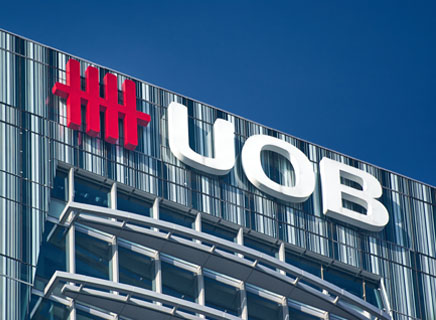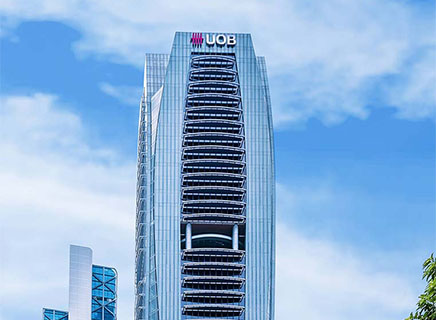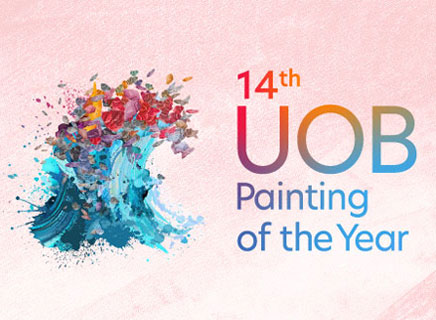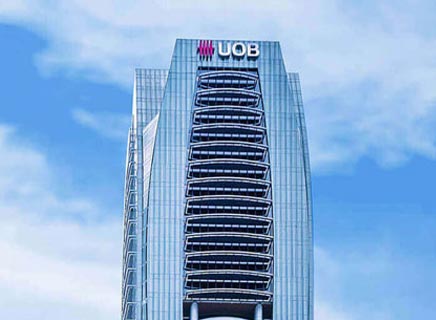News Release - 29 January 2021
Investment Insights
29 January 2021 – Promising developments on COVID-19 vaccines recently have injected a dose of optimism into financial markets. However, UOB Malaysia believes that investors should remain cautiously optimistic about corporate earnings growth this year. A full global economic recovery will likely require widespread vaccinations worldwide, continued government stimulus as well as stronger business and consumer sentiments.
The roll-out of additional government measures earlier this month in response to the current surge of COVID-19 cases in Malaysia shows that the recovery journey can be bumpy.
Against such a backdrop, Mr Ronnie Lim, Managing Director and Country Head of Personal Financial Services, UOB Malaysia, explains what investors can do to grow, to protect and to preserve their wealth while managing risk and volatility.
Q: How will the world economy fare this year?
Mr Lim: We believe that countries and industries that are supported by ongoing government stimulus can recover strongly this year, especially if COVID-19 vaccinations start by the middle of the year. As more people around the world are vaccinated, governments can slowly lift pandemic-related movement and travel restrictions, which will help the global economy to rebuild gradually in the second half of 2021.
Central banks will continue to keep monetary policy loose to support economic recovery. However, we expect the recovery chart to show diverging paths because some regions and sectors will emerge from the recession sooner and in better shape, while others that have been harder hit will recover more slowly. For example, industries such as e-commerce, electronics, technology, gaming apps and services and pharmaceuticals are thriving amid the pandemic.
With low interest rates and higher economic growth, we expect corporate earnings to recover from 2020 levels this year.
Q: What will the recovery in Malaysia be like?
Mr Lim: We initially forecast a 6.0 per cent expansion in Malaysia’s gross domestic product (GDP) in 2021. However, we revised our estimate after the reinstatement of the Movement Control Order (MCO) 2.0 in all states except Sarawak to curb the rise in COVID-19 cases. Assuming the affected states will be under strict MCO until the end of February with essential business sectors operating with only up to 70 per cent capacity, Malaysia may suffer an estimated economic loss of RM12 billion in 2021. With that in mind, we now expect Malaysia’s GDP to grow by 5.0 per cent this year and we will likely have to wait until at least 2022 to see a return to pre-pandemic levels.
However, the current restrictions are less severe compared with those imposed during last year’s MCO. Essential sectors are allowed to operate for a smooth flow of operations, business continuity and economic recovery. The government will also continue to roll out fiscal and monetary policy to sustain the economic recovery. In addition, the country’s first vaccination plan is scheduled to begin at the end of the first quarter – another reason to be optimistic.
The declaration of the state of emergency until 1 August this year is largely to ensure that no major political events, including elections, can be conducted as long as the proclamation is in effect. There are no curfews and economic activity is allowed to continue. This should result in greater government focus on containing the pandemic and implementing policies to sustain the economic recovery.
The key downside risks for Malaysia are lapses in containing COVID-19 infections, domestic political uncertainties despite the emergency proclamation and that the country’s recovery depends significantly on what happens globally.
Q: The road to recovery will likely be uneven and we do not know exactly what the new normal post-COVID-19 will be. Are there any investment opportunities despite such uncertainty?
Mr Lim: Investing is a continuous journey to grow one’s financial nest sustainably. Therefore, learning to build resiliency into your portfolio becomes the anchor decision point, instead of being distracted by market volatility. This will ensure a solid foundation of investment assets while managing the investment risks one is taking.
Investors need to ensure a core holding of protection and globally diversified income generating assets that can weather market volatility a lot better in times of heightened risks. With a good foundation, investors are better positioned to take on more risks and to participate in market opportunities as and when they present themselves.
There are certain deep-rooted, transformative trends and structural shifts that either emerged or accelerated during the pandemic. They are reshaping the way we live, work, and play. By recognising and participating in these irreversible transformations, investors can benefit as the global economy adapts and adjust to them in the future.
UOB has identified five mega investment trends that investors can look out for, namely China’s growth story, optimism on US’ recovery, global healthcare, artificial intelligence (AI) and innovation, and sustainability.
China’s growth story
China’s commitment to strengthening its domestic market offers many opportunities to investors. Tensions with the US in recent years have been a key reason for China’s current emphasis on domestic-led growth. The country aims to grow its domestic market to reduce its reliance on external demand. At the same time, it has opened its market wider to improve competitiveness and has sought to collaborate with new partners to counter the US’ attempt to restrict its access to the global technology supply chain. Technological advancement is also instrumental in China’s next phase of infrastructure development as it seeks to reduce its dependency on foreign technology.
By developing its domestic market and opening its doors for potential collaborations, China is also addressing its people’s desire for higher standards of living, and in turn access to better education, healthcare and other social services.
On its external relations, China continues to be a major exporter and remains Malaysia’s largest trading partner. Its exports have seen some recovery lately, with a shift from pandemic-related goods such as medical supplies to consumer goods. The regional demand for China’s exports is expected to expand further after the signing of the 15-nation Regional Comprehensive Economic Partnership last November.
Optimism on US recovery
The US economy is expected to see a gradual recovery this year with GDP expected to rebound by 2.8 per cent. The US Federal Reserve’s expansionary monetary policy and planned fiscal stimulus from the incoming Biden Administration should boost the country’s economy. Adding to the positive outlook, the US private sector has also begun to see a recovery in their corporate earnings since the third quarter of 2020. With the US pushing ahead with the roll out of its COVID-19 vaccination programme, we expect to see gradual improvements in the domestic economy. We also expect business and consumer confidence to improve further under the new administration, which also bodes well for the country’s economic recovery. The country’s strong innovation culture and dynamic business landscape will continue to provide opportunities for investors which is why we see optimism in the recovery of the US economy as one of the key themes.
Global Healthcare
The COVID-19 pandemic has underlined the importance of healthcare and the race to produce vaccines demonstrates how emerging technologies have made healthcare a sector on which investors should focus.
Technological innovation benefits areas such as biopharmaceuticals and medical technology, enabling healthcare providers to achieve greater efficiencies and to introduce new methods of service and care. For example, healthcare providers can use artificial intelligence (AI) to help ensure dementia patients take their medication regularly or use augmented reality technology to keep patients company through virtual interactions with them. Ongoing trials involving the use of AI have also shown the potential of predicting and diagnosing diseases more quickly. In addition, machine learning can be used in developing gene therapy to identify and to reverse the effects of defective genes, creating the possibility of treating serious illnesses including diabetes, cancer, Alzheimer’s Disease and HIV/AIDS.
The acceleration in digitalisation, which arose from the need for people to stay at home during the pandemic, has also led to increased demand for new virtual services such as telemedicine. These exciting developments translate into an attractive investment theme.
In the long run, healthcare spending will be driven by the growing and ageing global population, more affluence in developing markets, advances in medical treatments and health technologies, production of more prescribed drugs and rising healthcare labour costs.
AI and Innovation
Lockdowns because of the pandemic have compelled individuals and businesses to embrace digitalisation. Many businesses believe AI is set to transform their organisations and industries within the next three years1. This demand for AI will continue to grow as more industries begin to adopt the technology in their products and services. For instance, UOB uses AI to analyse transaction data, to turn information into meaningful insights and to provide customers with guidance on the most suitable financial solutions through our mobile banking app UOB Mighty.
AI technology is expected to contribute up to US$15.7 trillion to the global economy by 20302 as it reshapes industries including consumer goods and services, manufacturing, transportation and telecommunications.
Benefitting from the rising demand to tap innovation for increased efficiency, the technology sector is one that investors can look forward to for enhanced shareholder returns.
Sustainability
More investors are realising that their investments can have a far-reaching impact and that investing responsibly does not mean having to settle for lower financial returns.
For example, 71 per cent of institutional investors worldwide plan to integrate environmental, social and governance (ESG) factors into their investment processes by 20303. ESG-related managed assets are likely to grow from an estimated US$30 trillion in 2020 to US$160 trillion by 20364.
There are clear long-term benefits for investors to focus on companies that adopt ESG business models and practices early. For instance, as governments implement more and stricter regulations, such as to restrict carbon emissions over time, companies that have already started on managing their carbon footprint will be better equipped to sustain their growth. As such, companies that place emphasis on ESG practices will be able to generate both financial and sustainable returns for shareholders.
Q: What should investors investing in Malaysian equities look out for this year?
Mr Lim: Investors should be selective about Malaysian equities because the impact and recovery from COVID-19 is set to be uneven across different sectors.
Value stocks in the financial and healthcare sectors deserve more attention because they have been far outpaced by growth equities within the technology sector in the past several years, particularly in 2020.
If the pandemic persists, travel-related stocks will continue facing headwinds.
Q: What do you foresee as key risks for investors in 2021?
Mr Lim: The recovery of the global economy is reliant on a successful roll-out of vaccines worldwide. However, hiccups in vaccine distribution, concerns over the long-term side effects of the vaccines and anti-vaccine sentiment, as well as additional lockdowns in countries that are unable to contain new waves of infections will likely stretch the global recession. On the geopolitical front, tensions between the US and China are likely to continue as the US seeks to contain the rise of China.
Another key risk is if companies continue to fold as a result of the pandemic. This will lead to a deterioration of the global economy due to rising unemployment and shrinking demand. Recovery may be dampened if governments are no longer able to inject stimulus into the economy and contain the virus.
Q: Given the challenging market conditions caused by the COVID-19 outbreak, what should investors do to grow and preserve wealth?
Mr Lim: In addition to investing regularly over a longer time horizon, we encourage our investors to maintain a well-diversified portfolio by choosing quality and income-yielding assets to help optimise their investment returns. In doing so, they can also manage their overall portfolio risk as financial markets will likely remain volatile in the first half of 2021 due to the uncertainty around the duration and full impact of the global pandemic. A focus on long-term growth opportunities will help investors to protect the value of their portfolios. At UOB Malaysia, we adopt a Risk-First approach to help our customers manage their wealth portfolio in accordance with their risk appetite. By applying this approach, we help our customers to understand the potential risks of any investment ahead of returns, as they seek to achieve their long-term financial goals.
Q: In light of the uncertainties ahead, how should investors with a lower risk tolerance invest in 2021?
Mr Lim: Investors with a lower risk tolerance should focus on assets that are less volatile and which do not require active rebalancing. With risk-free rates so low, it will be prudent to invest in assets that can offer enhanced yields.
For example, short- to medium-duration high-grade bonds are defensive in nature and are able to weather periods of heightened volatility, giving investors greater portfolio stability. In addition, investors may want to consider Asian investment-grade bonds as they offer a more reasonable balance between defensiveness and attractive yields (2.0 to 2.5 per cent), compared with the Bloomberg Barclays Global Aggregate Index (0.9 per cent). These bonds will also benefit from the region’s earlier resumption of economic activity during the pandemic.
UOB Malaysia recently held its Market Outlook webinar on 23 January 2021 to discuss what investors can do to grow, to protect and to preserve their wealth while managing risk and volatility.
1 Source: State of AI in the Enterprise, 3rd Edition, Deloitte, July 2020
2 Source: Global Artificial Intelligence Study: Exploiting the AI Revolution, PwC, July 2017.
3 Source: Institutional Investor Survey, Allianz Global Investors, April 2019
4 Source: Global Sustainable Investment Alliance, Financial Times, Deutsche Bank, September 2019








